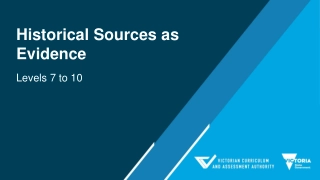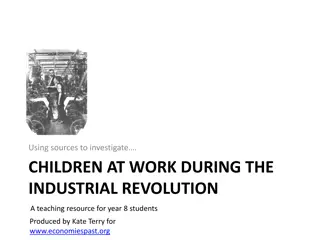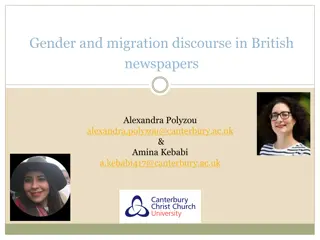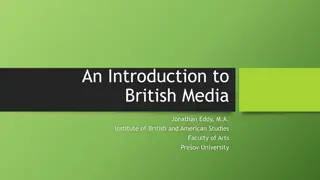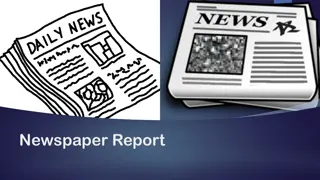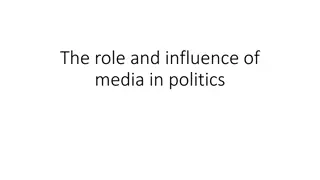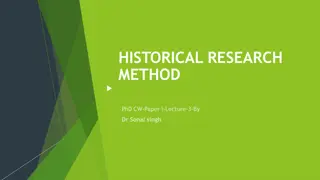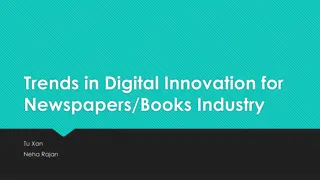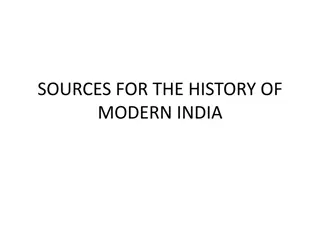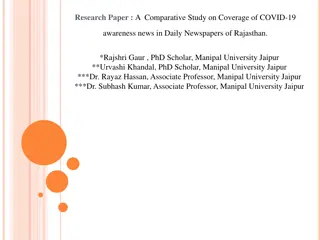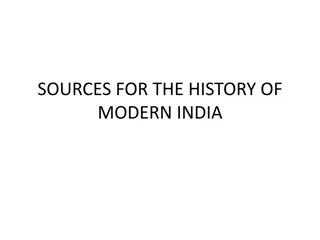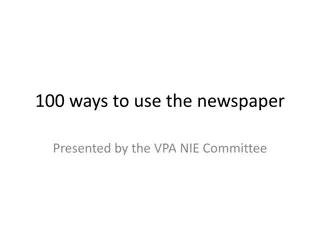Exploring the Role of Newspapers in Historical Research
Delve into the significance of newspapers as valuable sources of information for historical research. Learn how to identify suitable databases based on publication scope, date coverage, and geographic range. Discover effective search techniques and strategies to access full-text articles offline.
Download Presentation

Please find below an Image/Link to download the presentation.
The content on the website is provided AS IS for your information and personal use only. It may not be sold, licensed, or shared on other websites without obtaining consent from the author.If you encounter any issues during the download, it is possible that the publisher has removed the file from their server.
You are allowed to download the files provided on this website for personal or commercial use, subject to the condition that they are used lawfully. All files are the property of their respective owners.
The content on the website is provided AS IS for your information and personal use only. It may not be sold, licensed, or shared on other websites without obtaining consent from the author.
E N D
Presentation Transcript
CMNS 210: Media history Finding news sources Sylvia Roberts Liaison librarian for Communication sroberts@sfu.ca
#1 #3 #2
Do any of you read newspapers? What do you know about newspapers as an information source?
Why would CMNS researchers use news sources as evidence?
Research outcomes for today Role of newspapers, news magazines and trade magazines in historical research Identify suitable databases for your topic by scope: Type of publications included By date coverage By geographic coverage Effective full-text search techniques to find relevant articles Finding the full text of articles not available online
PREPARING TO SEARCH SCOPE OF DATABASE: Chronology New? Popular? Change in use? Geography Uptake / availability of technology may vary Nature of publications Newspapers Popular magazines (lifestyle, sport, technology) SEARCH TERMS: Generic variations radio OR wireless Brand names Terminology change over time or geography mobile OR cell Wikipedia contributors. (2020, February 9). Video game console. In Wikipedia, The Free Encyclopedia. Retrieved February 10, 2020, from https://en.wikipedia.org/w/index.php?title=Video_game_console &oldid=939970186
Full text news database records are structured like newspaper articles so the field labels reflect that: Headline is the title Lead is the first paragraph Byline is the author
The inverted pyramid is a metaphor used by journalists to illustrate how information should be prioritized and structured in prose (e.g. a news report). Searching for your terms in the headline and lead paragraph helps you find news stories that focus on your topic.
ADDED INFORMATION TO ENHANCE SEARCHING
Search options for full text news sources Natural language Term & connectors Boolean (and, or, not) Proximity (same, w/5) Wildcards (! *, ?) Limiters By source By date Words within specific fields / segments Headline Headline & lead paragraph Byline Section (editorial, opinion) Filter after searching
New search terms: hand-held computer pen computer
The section of the newspaper may indicate the importance of topic (p.1 most newsworthy) or the intended readers (sports, business, entertainment, ladies pages )
Search options for index/abstract databases Database record describes the document, with links to full text Effective search uses keywords and operators NOT natural language Boolean operators connect search terms: Limit prior to search By type of source or source title By date Search within fields: Author Subject Title palm pilot OR personal digital assistant OR PDA OR hand-held computers Filter results after searching palm pilot AND productivity
Other archival formats: Print (bound journals) Microform Both can be scanned to digital files, using the photocopiers or the microfilm readers on the 6th floor of the Bennett Library.
https://newspapers.lib.sfu.ca/newspaper- categories/immigrant-experience


